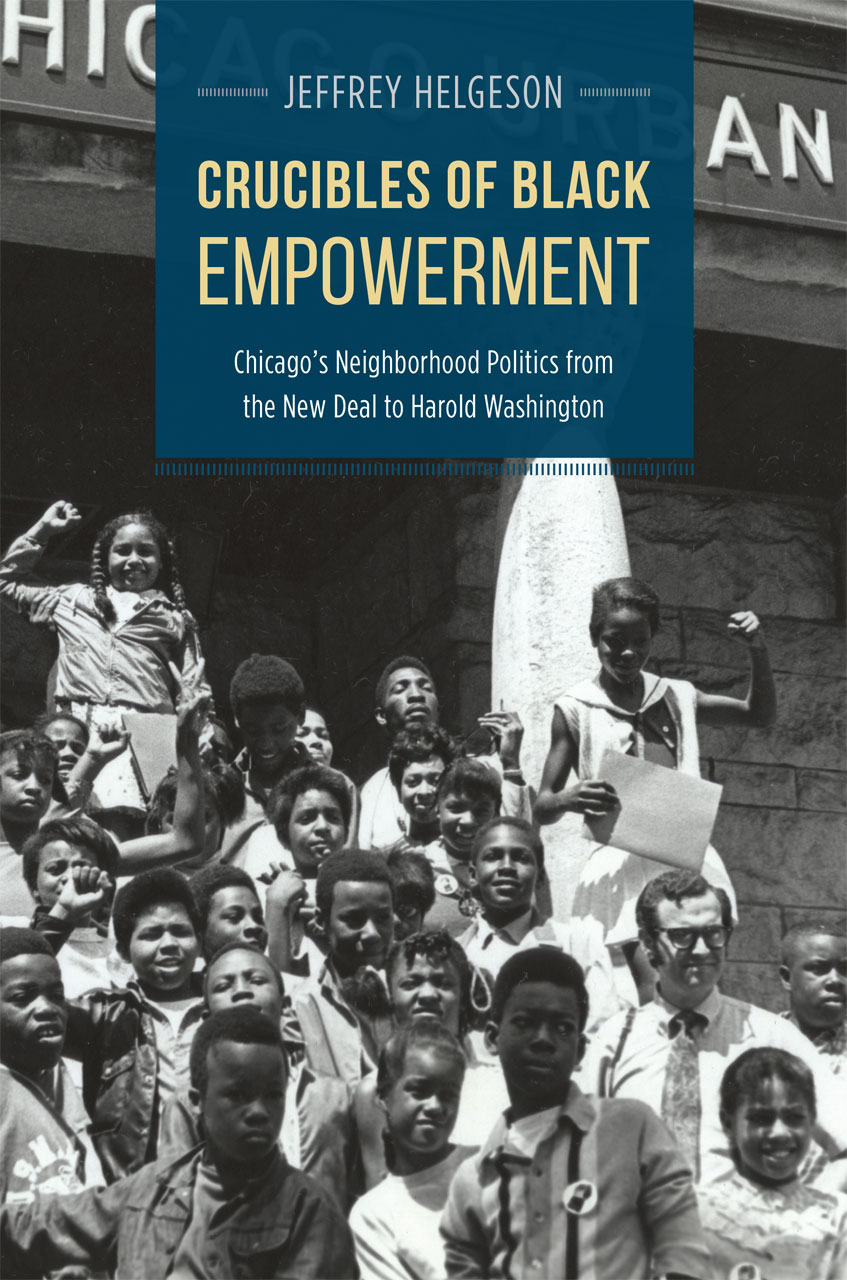Crucibles of Black Empowerment tracks the “unique political cultures” of black Chicagoan communities from the Depression onward. It’s the story of the social-turned-political devices that people, particularly women, relied on to instigate change. Jeffrey Helgeson, a historian at Texas State University, presents various stories of community leaders who used the institutions at their disposal. For example, Helgeson shows how Addie Wyatt, an activist, “did what thousands of women and men like her have done for generations” and “built independent, ‘parallel’ black institutions that sought to improve the quality of life in their communities and to construct a base for greater economic and political power.” Her story, and many others like it, shows that when the governing body fails to support its citizens, those citizens respond with strategic voracity.
The reclamation of power often begins as heavy community involvement, accruing political influence through collective expansion that nonetheless contains identifiable leaders. These leaders—community organizers—came to the forefront of social justice and activism during the 1930s, backed by popular institutions: the church, the union, the neighborhood. As Crucibles treads this past through five decades, it gives a glimpse of the people who make up Chicago’s unsettling racial history.
Crucibles puts forth the idea that the pursuit of justice is a dichotomous arrangement—the personal intersecting with the political. Helgeson observes that “black activists saw the connections between work and community, politics and everyday life, and individual opportunity and collective well-being.” Institutions whose services are intended for individual experience or fulfillment are also those in which the means of socio-political power presents themselves.
For instance, Georgia Lawson used the political clout of Olivet Baptist Church in Bronzeville to address the housing and food issues families like hers faced during the Depression. Her efforts made her a delegate to Governor Henry Horner, whom she pressured into addressing the South Side Merchants Cooperative, which, peddling misinformation, sought to persuade city officials to end poverty relief programs with cash benefits.
The “broad black freedom struggle,” as Helgeson terms it, is not a linear improvement. We come to see progress as a series of hills and valleys: from pre-Depressio to post-Depression, pre-World War to post-World War II. Helgeson describes in encyclopedic detail the trends of employment and how they oscillate. However, his study is as much about the specificity of individual circumstance as it is about the sweeping issues they prove; social activism—its methods, audience, and trajectory—is as unique to local situations as the systemic issues it pushes back against are generalized.
The idea of fighting for one’s community becomes a test of how well political connections can be used on behalf of working people. Helgeson is clear that the government during this time was particularly unfair and deaf to black communities. He does not romanticize the response of black people and black leaders but instead details the various, though limited, connections and makeshift routes they formed in the place of social and federal establishments—establishments such as the United States Employment Service (USES), responsible for issuing Certificates of Availability, which “generally reinforced racial discrimination in the labor market.”
In regard to the book’s narrative, it felt more like an exercise in the sheer quantity of experiences accounted for than an analysis of power dynamics in Chicago. We get a comprehensive account of Chicago’s changing racial landscape, but we don’t hear much of Helgeson’s voice outside of his research.
Though Helgeson insists on the importance of the individual in racial progress, exceptional cases do not equate to many opportunities for the masses. The political accomplishments of activists like Addie Wyatt are lined up against Helgeson’s conclusion that inequality cannot be completely remedied by “individual action and procedural reform,” but such challenges risk being overlooked as the activists are given his exhaustive focus.
What the compromises leaders made in accord with structures of race, status, and gender yielded, he writes, were more “radical visions of the global struggle against imperialism and inequality.” Progress is not a synonym for equality, but Helgeson celebrates it as if it were just as impressive, considering the obstacles.
Jeffrey Helgeson, Crucibles of Black Empowerment, University of Chicago Press. 368 pages.



